"The Monarch Butterfly, winner of the MPD Nature Film Trophy, depicts the life cycle of this well known butterfly and shows the various stages through which it must pass" PSA Journal, Sept. 1966, 35.
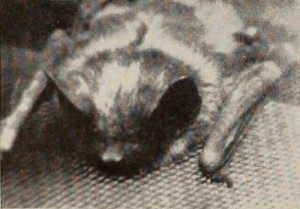
"Francis M. Spoonogle apparently keeps a large family of snakes, bats, bugs, slugs and praying mantises in his backyard, to talk to in his idle moments. It is a fascinating collection, though most of us would probably be just as well satisfied with a couple of dogs and cats. At any rate, in Movie Menagerie Mr. Spoonogle exhibits his prizes in some of the finest ultra-closeup studies ever to reach the 8mm. screen. Although playing on a small stage, his creatures seem quite uninhibited during their brief periods of stardom. For instance, the favorite pastime of the female mantis seems to be eating all other types of small life (including her husbands) which might offer interesting digestive experiences. Many of Mr. Spoonogle's other characters are of a sweeter nature, however, and the film does not leave you feeling hopeless about nature by any means." Movie Makers, Dec. 1947, 534.
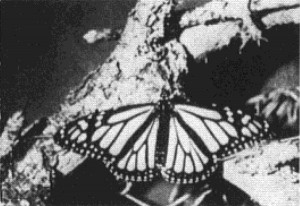
"The monarch butterfly comes home to the butterfly trees at Pacific Grove, California, from Canada and the Pacific Northwest, in the early fall. School children, with the help of the grownups, stage a colorful parade in honor of these monarchs. The habits and complete life cyce unfold before us; the butterfly, eggs, larva or caterpillar, chrysalis, and the emergence of the new butterfly. A fascinating subject presented beautifully" PSA Journal, Nov. 1960, 40.
"Narraburra is a slick piece of drama telling of the misfortune encountered by a prospector in the wilds of Australia who is thrown from his horse and breaks his leg. While his friends go for aid, a colony of meat ants find him and he knows that in a short while they will eat his flesh until he dies. How he keeps the ants from achieving their objective provides good cinema fare" PSA Journal, Sept. 1966, 35.
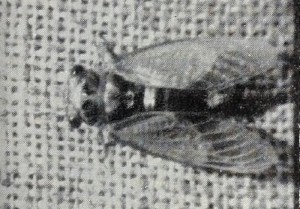
"There is a lively and rewarding sense of participation about Nature Campers which, despite its threatening length, should give this picture wide appeal. In it, an eager-eyed group of young people and a few engagingly raffish naturalists pursue their studies of the outdoors with enthusiasm — and sound cinematics. Birds, butterflies, frogs and fish are among the creatures which come before Herbert Shumway's camera. But they come there, not just in the stiff ultracloseups of the studio, but as a natural part of the picture's development. The background musical selections are an enjoyable addition to an entertaining picture." Movie Makers, Dec. 1951, 412.
"In this year's goodly collection of films based largely on extension tube cinematography, Nature in the Garden by W. G. Nicholls tops not only the excellent pictures of many other contestants, but also his own Ladybird, a ten best award winner in 1953. Nature in the Garden is an instructional film pure and simple, chock full of facts to please the most apathetic, as well as the most enthusiastic, bug-viewer. Excellent technical work by a master student of both nature and cinematography has resulted in outstanding and often exciting closeups of bees, spiders, moths and other insects. Skillful editing and an unobtrusive yet informative narrative make Mr. Nicholls' production an exceptional short subject. To this teacher, Nature in the Garden is definitely superior to most of the professional nature films now being circulated in American educational circles" PSA Journal, Jan. 1955, 49.
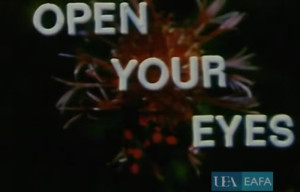
'Amateur filmmaker Dorothy Maxey observes the wildlife in her native Norfolk capturing on Super 8 film a variety of interesting flora and fauna, including at Thompson Common where ponies wade into the pingos and steal the heads from the water violets, and in her own back garden stumbling across wrestling toads. The filmmaker also recalls a story of nursing a poorly mouse following a frosty night by returning home with it to kindly warm him up under the oven grill' (EAFA.org.uk)
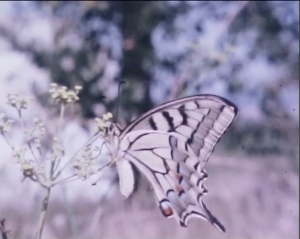
Documental sobre el ciclo de vida de la mariposa Papilo Machaón, desde su fase inicial como larva hasta su forma final como mariposa. “En el atardecer, descansan las mariposas esperando al nuevo día para continuar su misión, libando y fecundando flores, manteniendo así el equilibrio ecológico del fascinante mundo de la naturaleza”. (Papilio 1980)
Documentary about the life cycle of the Papilo Machaón, from its initial stage as a larva until its final form as a butterfly. "At sunset, the butterflies rest awaiting the new day to continue their mission, absorbing polen and pollinating flowers, maintaining the fascinating ecological equilibrium of the natural world. (Papilio 1980)
"In Pattern of Living we are told how life on this earth probably began. Most likely it started after the upheaval of the sun 5,000 million years ago. Algae and animacules were perhaps the first forms of life, to be followed by the vegetable, and later the worm which was the forerunner of insects as we know them today. Clorophyll, the narrator explains, is responsible for combining water with sunlight to produce sugar that gives energy. Much of the film was shot through a microscope and some animation is used" PSA Journal, Sept. 1965, 51.
"Film opens with views of commercial apiaries, working along into close up of hive. Hive is opened, queen shown, also drones and workers. Handling and shipment of queens and workers. Macrophotos of workers gathering honey. Production of wax and comb, also honey. Water carriers and guards. Production of queen and brood. Novelty hat and beard fashions from bees. Operator takes mouth full of bees. Closes showing 2 young boys beekeeping and gathering their crop." Educational Film Guide, 1937 Edition, 54.
Total Pages: 5